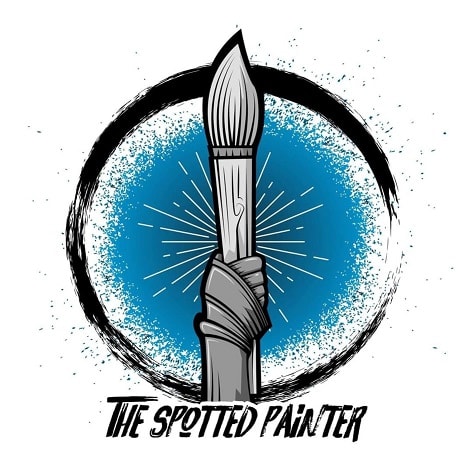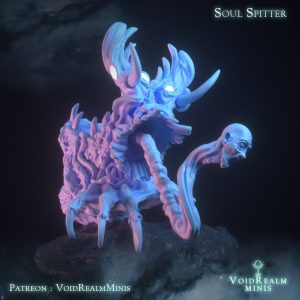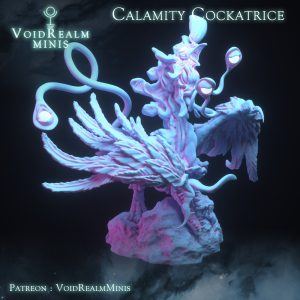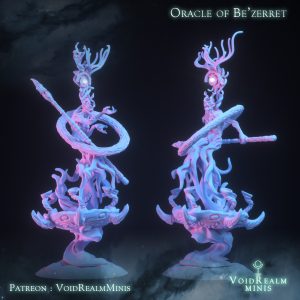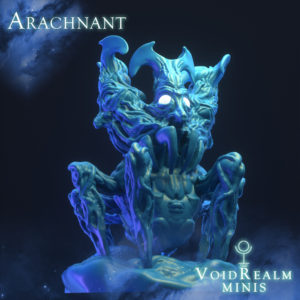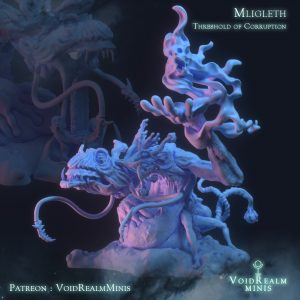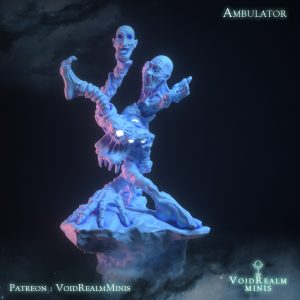This month in our artist spotlight, we had the chance to sit down with the man behind VoidRealm Minis, Kent Caldwell. If you follow any of the FaceBook groups centered around 3D printable minis, you’ve likely run across his work. He has a very distinct (and often creepy) style centered around cosmic horror. With an extensive background that spans through everything from acrobatics to dioramas, we really enjoyed our time getting to know Kent, and his work a bit more. In addition to selling his work on MiniHoarder, he also runs a Patreon account. We encourage everyone to give them both a look.

For every Artist Spotlight, we have one of the artist’s miniatures professionally painted by our friend Chris at The Spotted Painter. Kent chose his new moon beasts, and Chris did a phenomenal job painting it. Above are the final images. If you’d love to print this beasty out and give it a paint job of your own, you can find it here.
MH: Last week we started of with a question about the origin of the studio name. It seems only fitting to start there again. Where did you get the inspiration for VoidRealm Minis?
Kent: The pandemic in 2020 changed my life overnight; I went from performing nightly with Cirque du Soleil in Las Vegas (I’m an acrobat) to finding myself unemployed and my industry decimated in what seemed like the blink of an eye. I always knew one day my career would move away from performing, but I never expected it to happen so suddenly, nor that the entire live theater industry – where I had my professional network – would essentially disappear. I felt, quite literally, thrown into some Void or alternate dimension. In Spring of 2020, I was starting to realize that I could channel my decades of experience as a Fine Artist into a creative practice that was potentially sustainable for me, while also allowing for a large degree of creative freedom. In trying to brand something from the ground up, I liked “VoidRealms” because it implies a landscape or cosmos that is unknown and mysterious. It’s also a subtle tip of the hat to my workflow, since I sculpt in Virtual Reality (VR… VoidRealms… get it?!).
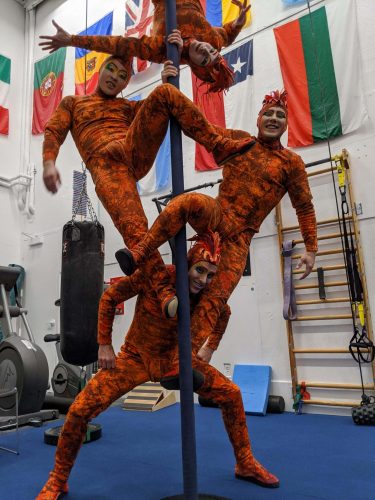
MH: You have a very unique style to your sculpts. What inspires your designs and creatures?
Kent: I get this question a lot, and I think there are several driving forces that give my sculpts their style and flavor:
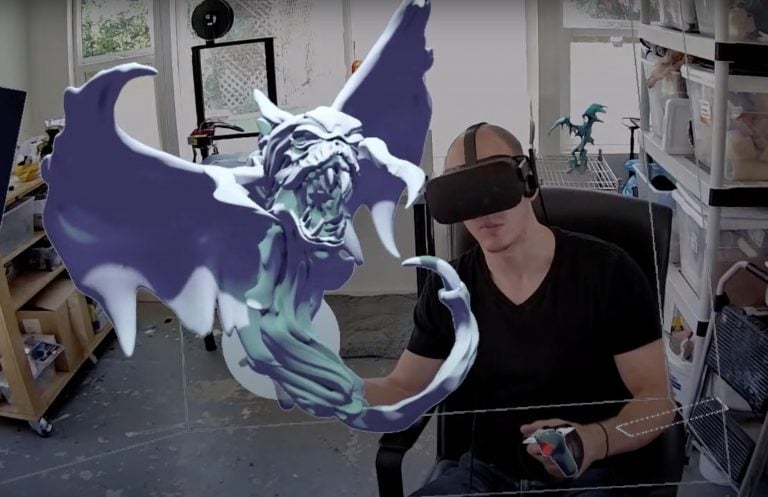
Also, my Fine Art (dioramas) are all about world building but in a way that is very suggestive, almost poetic; I like to imply deeper narratives without spoon feeding it to the viewer. I adore video games like Hyper Light Drifter and Blasphemous, which both do this quite well. I love creating characters and monsters that have these rich narratives implied in their design.
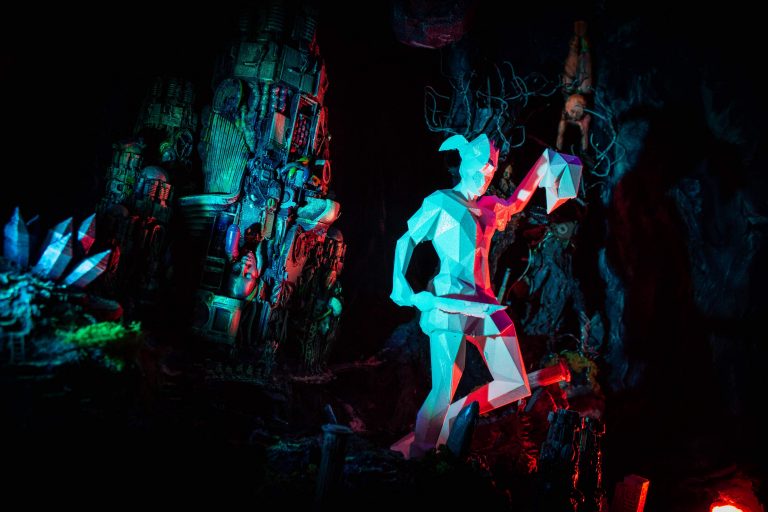
When I work, I like to surprise myself and let the sculpture “speak to me” in a way as it takes shape. I have a lot of traditional fine art training and have studied anatomy a fair amount, but I do not come from the concept art / movie art / character design fields. I’ve been designing concepts for myself for years without answering to art directors or using that traditional industry pipeline. I treat the initial sculpting phases as part of the sketching / design process and do very little sketching. I’m constantly looking for opportunities to take the sculpt in new directions that I wasn’t expecting while I’m building it.
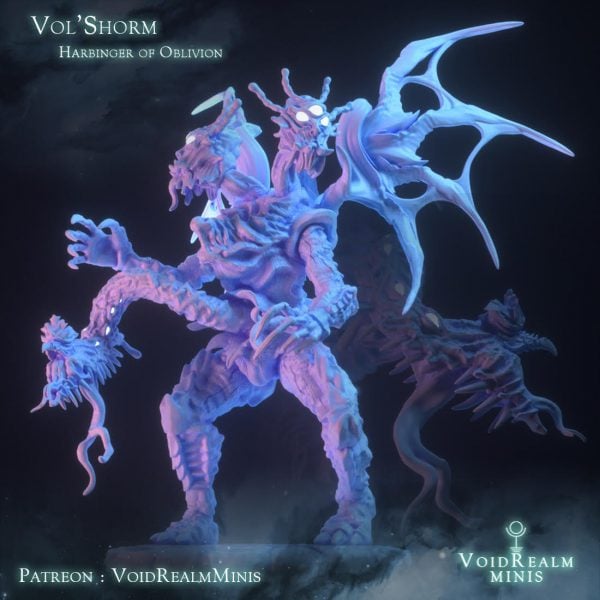
A good example of this is the model “Vol’Shorm” from my current Patreon bundle. Vol’Shorm was designed almost entirely in 3D. I originally had him flying / elevated and balanced by a tail, but felt he worked better grounded, like a lot of the old 60s Kaiju from Japanese series like Ultraman. The “head” of the strange serpentine thing in his belly also went through several iterations and the silhouette changed until I landed on the final form. This keeps the process exciting and fresh for me, but without a clear sketch or direction, you have to rein yourself in from time to time and be willing to make decisions and nix elements that you may have initially liked a lot – definitely a balancing act.
MH: Just as unique is your method for doing sculpts. You’re one of the few artists we know to work almost solely with VR. Can you tell us more about your setup, and how you got into that as opposed to a more traditional work flow?
Kent: I use an old Oculus Rift CV1 (first generation!) that I got back in 2016, tethered to a PC with a strong graphics card in my home studio. I downloaded a couple of games, but took pretty quickly to the software “Medium,” which I still use to sculpt to this day. Using Medium was like discovering drawing as a child; suddenly I was putting on the headset and “sketch-sculpting” every day, ravenously. I couldn’t get enough – I didn’t have to motivate or discipline myself or force myself to create daily habits, it just flowed so naturally to sculpt in VR and brought me so much joy. My output became quite prolific, if unrefined.
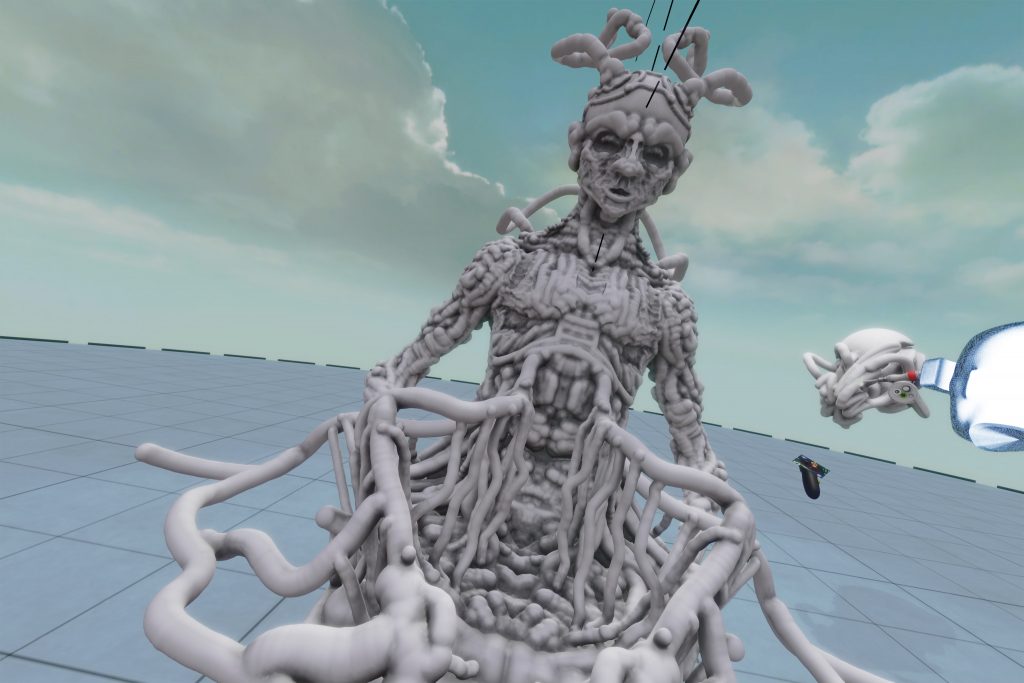
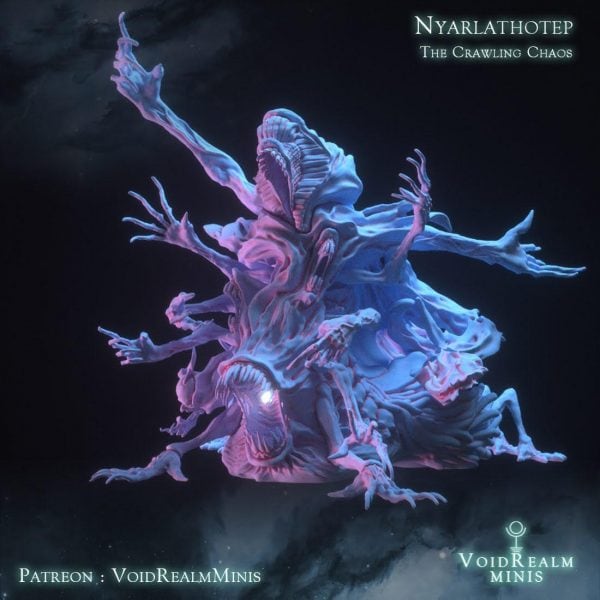
MH: It should be noted that you’re an artist of many different formats, and that you are trained as a Cirque Du Soleil performer. How did you make the jump from that to digital sculpting, and has it had any sort of impact on your art?
Kent: When I went to the University of Michigan (2010), I competed on the varsity NCAA gymnastics team and earned a BFA in Fine Art. I’ve been a gymnast my whole life, as well as a visual artist. It was really the pandemic and the job layoff that pushed me to consider how I could monetize my skills as a sculptor in a field that would give me a lot of creative freedom.
MH: We are so thrilled to be able to celebrate your one year anniversary with you. What are some of the biggest takeaways or lessons you’ve learned over the past year as a digital sculptor?
Kent: I still get so much joy when people discover my work and are excited by it. Nothing is more thrilling in this field than when a happy Patron takes the time to print one of my pieces and personalize it by painting it in their own style. This is a really humbling lesson in reminding me that I am sharing my work with many other people, and inspires me to constantly push myself and my sculpts to new levels.
MH: This past month has included some really incredible looking sculpts. Would you mind describing these a little more, and telling us about your inspiration for them?
Kent: I decided to create a bit of a mixed-bag for the lineup in July with several gargantuan monsters as well as some smaller creations. I decided to pull directly from the Cthulhu Mythos a bit, settling on the “Dreamlands” as a theme and do a take on Moon Beasts and the Hound of Tindalos. Both are statted in Sandy Petersen’s “Cthulhu 5e” book – a wonderful 5e sourcebook that’s so much more than a mere monster manual.
MH: Do you have any advice or folks who might be just starting out with digital sculpting?
Kent: I could probably write a novel answering this question, but here are some quick tips:
- Study the figure – figure drawing AND figure sculpture. Get books by George Bridgeman and Phillipe Faraut.
- Level up your ZBrush skills (watch Michael Pavlovich on YouTube, take a class from Scott Eaton)
- Constantly assess a sculpt from all angles (not just a turntable – look at it from high and low angles as well)
- Sculpt prolifically, experiment, iterate. Quantity always trumps quality.
The Grande Finale
We had a fantastic time talking to Kent and really appreciate him taking the time to chat with us. We’d also like to give a well deserved shout out to Chris Spotts for doing such a fantastic job on painting the Moon Beast. More of Kent’s incredible work can be found here on MiniHoarder, and for those who want access to his monthly sculpts for a single low price, you can do so via his Patreon.
Chris is the painter behind The Spotted Painter, and runs a YouTube channel and can be found via his FaceBook page.
If you’re an artist and would like to be featured in our Artist Spotlight, give us a shout at [email protected].

